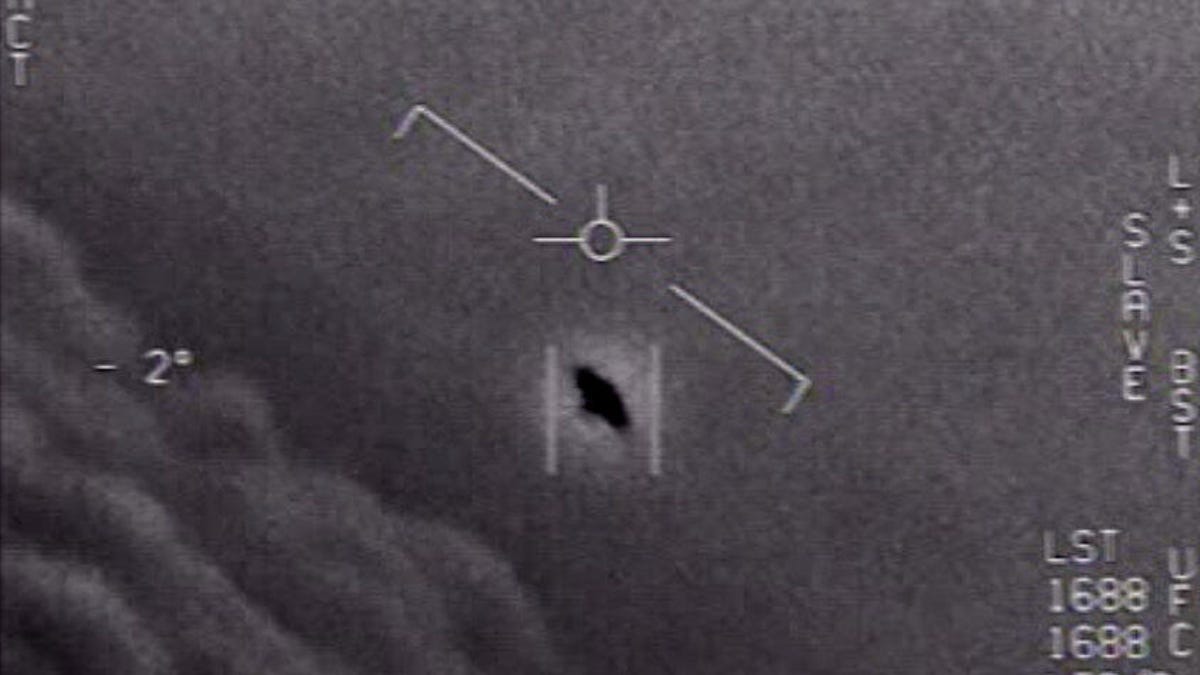Harvard professor begins new search for alien spaceships in our skies
The famous (or infamous, depending who you ask) scientist and E.T. believer Avi Loeb is out to capture some UAP sightings of his own.

This still shows the unidentified object tracked by a Navy pilot in 2015 in the "Gimbal" video.
Harvard's controversial astronomer Avi Loeb is leading a new initiative, dubbed the Galileo Project, to check Earth's skies and the rest of the solar system for signs of extraterrestrial intelligence.
The longtime astronomy professor, who became well-known for his belief that interstellar object Oumuamua was likely an alien probe, announced the details of his plan via a virtual press conference Monday.
Officially, the initiative is described as "a transparent scientific project to advance a systematic experimental search for cross-validated evidence of potential astro-archaeological artifacts or active technical equipment made by putative existing or extinct extraterrestrial technological civilizations (ETCs)."
Translation: The plan is to use a variety of telescopes to look for alien spaceships, probes or other debris left behind by intelligent beings who weren't born on Earth.
"What we see in our sky is not something that politicians or military personnel should interpret because they were not trained as scientists," Loeb told reporters. "It's for the science community to figure out... based on non-governmental data that we will assemble as scientists."
The first phase of the project involves setting up a network of dozens of relatively small telescopes around the globe that will attempt to capture new images of unidentified aerial phenomena (UAP, the newly favored and more inclusive acronym designed to replace "UFOs").
A highly anticipated report released by the US Director of National Intelligence in June confirmed the existence of a number of UAP, which the military and intelligence community can offer no certain explanations for.
"The goal of the Galileo Project is to bring the search for extraterrestrial technological signatures from accidental or anecdotal observations and legends to the mainstream of transparent, validated and systematic scientific research," reads a statement.
New eyes on the sky
To do this, the plan is to focus solely on gathering new data and observations instead of analyzing past UAP sightings like those included in the recent DNI report. The new data will then be analyzed by algorithms and artificial intelligence to attempt to separate true UAP from birds, balloons, drones, satellites and other known explanations.
Project co-founder Frank Laukien, a visiting chemical biology scholar at Harvard and CEO of scientific instrument maker Bruker, noted the Galileo Project won't be considering any alternative physics-based explanations for new UAP observations.
"We will stick, scientifically, to known physics but will make the data available," Laukien said.
Loeb has become a polarizing figure in the astronomy community, especially since the release of his book outlining his Oumuamua hypothesis earlier this year, with a number of scientists accusing him of jumping to radical conclusions without appropriate evidence.
lmao most scientists don't discount the possible existence of these types of civilizations (the universe is vast!), but most don't jump on extraordinary claims without extraordinary evidence, which Loeb likes to do. https://t.co/BvhLFqh7Ea
— 👾 Justin Cowart 👾 (@jccwrt) July 26, 2021
"Most scientists don't discount the possible existence of these types of civilizations (the universe is vast!)," Justin Cowart, a Ph.D. candidate studying Martian geology, tweeted Monday. "But most don't jump on extraordinary claims without extraordinary evidence, which Loeb likes to do."
Loeb rejects the premise "extraordinary claims require extraordinary evidence" but still hopes to collect some with his new project. Indeed, the nod to Galileo in the project name is a bit of a clap back at his critics by drawing a comparison to the famed 16th century astronomer who was imprisoned for his then-heretical suggestion the Earth revolved around the sun and not vice versa.
Looking further out, too
In addition to trying to spot UAP in the sky, the project also plans to use next-generation telescopes like the upcoming Vera C. Rubin Observatory to look for more objects in the solar system like Oumuamua, as well as for potential alien probes orbiting Earth to check us out in a low-key way. A description of the project even leaves open the possibility of designing its own purpose-built space observatory:
"We will conceptualize and design, potentially in collaboration with interested space agencies or space ventures, a launch-ready space mission to image unusual interstellar objects such as Oumuamua by intercepting their trajectories on their approach to the sun or by using ground-based survey telescopes to discover interstellar meteors."
All this is a potentially expensive proposition. Loeb told reporters he has received donations to his research fund at Harvard totaling over $1.75 million in the last two weeks with "no strings attached."
He says the hope is to increase that funding level by at least tenfold "to accomplish more rigorous study."
As for when we could see new UAP images courtesy of the Galileo Project, Loeb said the team is selecting its telescopes and hopes to present "interesting results in the coming year."
"It starts now," he said.
Follow CNET's 2021 Space Calendar to stay up to date with all the latest space news this year. You can even add it to your own Google Calendar.

